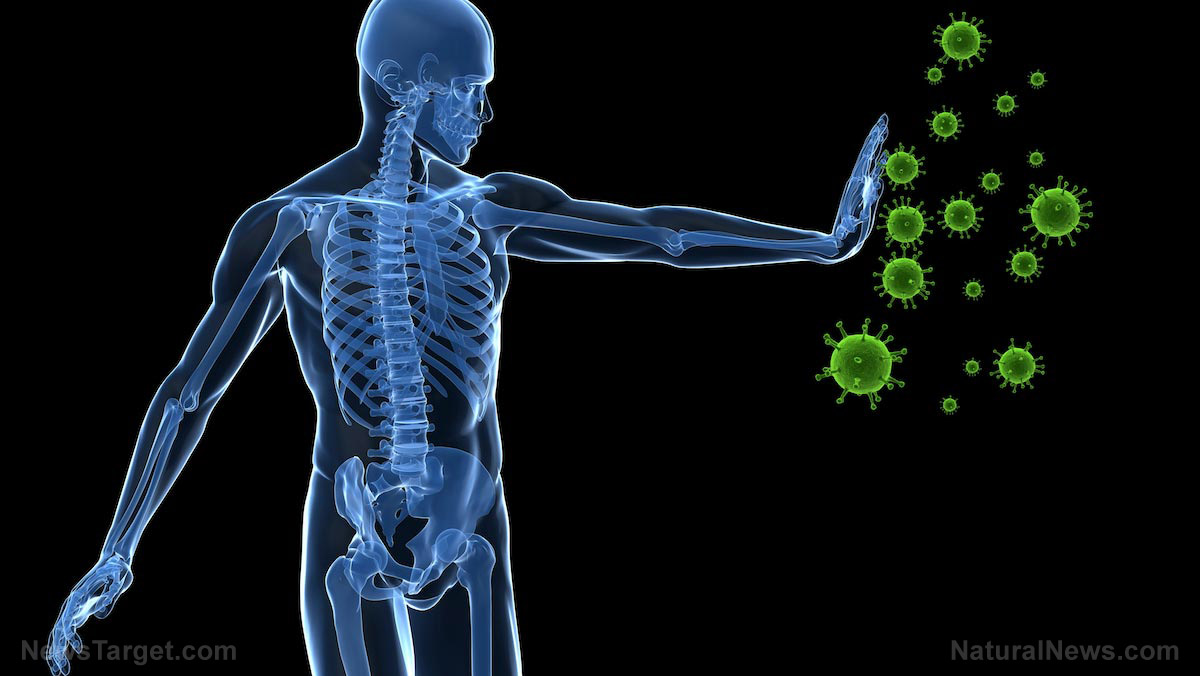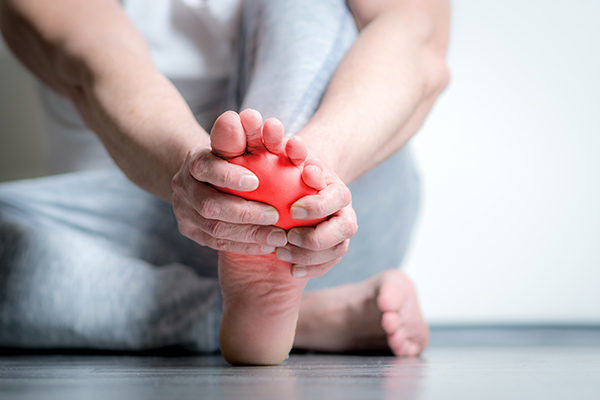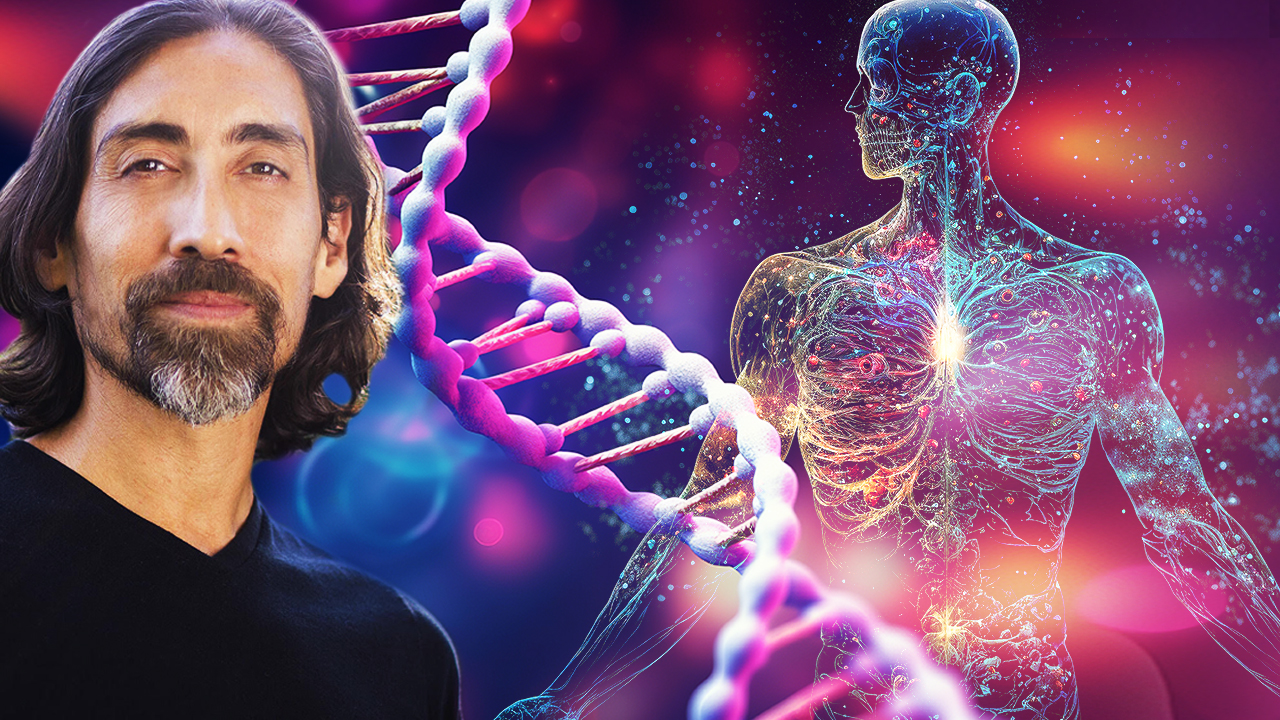6 Natural ways to increase blood flow to your brain
08/22/2023 / By Evangelyn Rodriguez

Blood circulation is a bodily function that’s crucial to the survival of every part of your body, from the tiniest cell to the largest organ. Your blood supplies oxygen and nutrients to your tissues, which need both to survive and function normally. Each of the more than 37 trillion cells that compose your body needs oxygen to efficiently use glucose, which is just one of the many nutrients delivered by your blood. Aside from glucose, your cells’ main source of energy, your blood also distributes vitamins, minerals, fats and proteins to your cells and organs.
Your brain is one of three vital organs that consume the most oxygen. Despite comprising only two percent of your total body weight, your brain consumes about 18.4 percent of the oxygen that enters your body, making it the second highest oxygen consumer after the liver, which uses about 20.4 percent. Your brain needs plenty of oxygen because in order to generate energy, it relies almost exclusively on a form of metabolism that requires oxygen. Your brain cells, or neurons, also need a continuous supply of oxygen in order to communicate with each other and transmit signals to the rest of your body.
This is why optimal blood flow is essential to your brain’s health and functioning. Aside from delivering oxygen and nutrients, your blood also carries away unwanted metabolic waste products, including toxins and carbon dioxide, as it exits your brain. Blood, which is 51 percent water, also helps keep your brain hydrated. Because your brain is about 75 percent water, dehydration can negatively affect its performance. Even a two percent loss of water can lead to a decline in cognitive function, such as poor concentration, short-term memory issues, decreased reaction times and negative mood changes.
Causes and symptoms of poor blood flow to the brain
Your brain relies on only two sets of major arteries for its blood supply. The carotid arteries, which are located in the front of your neck, supply blood to the front two-thirds of your brain, while the vertebral arteries, which extend alongside your spinal column, supply blood to the back third of your brain. One of the most frequent causes of disrupted blood flow to the brain is blocked carotid arteries. Fatty deposits called plaque can build up in your carotid arteries, causing arterial damage and blood clots to form. Blockage of the carotid arteries due to a blood clot is the main cause of ischemic stroke.
Ischemic stroke is a dangerous event that can lead to permanent brain damage and even death. When blood supply is cut off from any part of your brain, your brain cells can only last a few minutes without a steady supply of oxygen and nutrients. Unfortunately, brain cells are not capable of regenerating, which is why ischemic stroke can leave survivors with devastating physical, cognitive and mental disabilities. Here are the common signs and symptoms of an ischemic stroke:
- Sudden numbness or weakness of the face, arm or leg, especially on one side of the body
- Sudden confusion
- Sudden trouble speaking
- Sudden trouble seeing in one or both eyes
- Sudden trouble walking
- Sudden dizziness, loss of balance or coordination
- Sudden, severe headache with no known cause
Poor or inadequate blood flow to the brain, on the other hand, can be caused by many factors, such as the narrowing of blood vessels (stenosis), the formation of clots (thrombosis), blockage (embolism) or the rupturing of blood vessels (hemorrhage). Common signs and symptoms of reduced cerebral blood flow may be similar to stroke and include:
- Brain fog
- Dizziness or lightheadedness
- Mental fatigue
- Memory loss
- Slurred speech
- Numbness or a tingling feeling
- Frequent headaches
- Partial of complete loss of vision
- Confusion
- Poor focus and concentration
- Difficulty swallowing
- Loss of balance
- Cold nose, feet or hands
- Cramping in the feet or hands
- Unhealthy nails
6 Ways to increase blood flow to your brain
There are many factors that contribute to reduced blood flow to the brain, such as living a sedentary lifestyle, smoking, being overweight and being under stress. People with anemia, brain injuries, depression, diabetes, heart disease, hypothyroidism and low blood pressure are also at an increased risk for low cerebral blood flow. But the good news is, there are plenty of things you can do to ensure optimal blood flow to your brain. Here are some of them:
Exercise
According to research, one of the benefits of exercising is improving blood circulation throughout the body. This means that when you exercise, more blood flows to your brain. A recent study by researchers at the University of Texas Southwestern Medical Center reported that regular exercise benefitted older adults with mild cognitive impairment by decreasing blood vessel stiffness in their necks and increasing overall blood flow to their brains.
Moderate exercises, such as brisk walking, swimming, cycling or yoga, can do wonders for your blood circulation. (Related: Exercise preserves brain cells and prevents memory loss.)
Inversion therapy
Inversion therapy, or spinal traction, is a technique that involves being suspended upside down for several minutes. This therapy is said to be effective for relieving back pains, stretching and elongating the spine, and easing pressure off compressed discs. Hanging upside down can also increase your flexibility and increase blood flow to your brain.
Note that inversion therapy is not for people with hypertension, heart disease or any disease of the eye.
Musical training
According to a study from the University of Liverpool in England, brief musical training can increase blood flow in your brain’s left hemisphere, which is known to control speech, comprehension, arithmetic and writing. The study noted that musical training brings about a rapid change in cognitive mechanisms involved in music perception, and these mechanisms are also used by the brain for language.
In a more recent study, Japanese researchers also found that playing a musical instrument increases blood flow in the middle cerebral artery, the largest branch of the internal carotid artery. The middle cerebral artery is also the blood vessel in the brain most commonly affected by diseases.
Learn a new language
According to a study involving foreign students in Japan, acquiring a new language boosts brain activity as well as blood flow to the brain. MRI scans revealed significant increases in blood flow to the four language-related regions of the brain while first-time learners of Japanese tried to learn unfamiliar characters and sounds.
Similarly, a study published in the International Journal of Education, Culture and Society reported that learning/using different accents, styles of writing and pronunciations stimulates the brain, improves cerebral blood flow and even helps fight brain aging.
Meditation
According to a joint study by American and Chinese researchers, meditation, specifically integrative body-mind training (IBMT), can help improve mood as well as blood flow to specific brain regions. Practicing IBMT for a few hours every day was found to increase resting cerebral blood flow in brain areas involved in attention and self-regulation. IBMT is a meditative practice that combines multiple mind-body components, such as relaxation, breathing, imagery and mindfulness training.
Acupuncture
According to a study published in the journal Medical Acupuncture, targeting acupoints along the governing vessel meridian, which runs along the front and back of the torso, helps increase cerebral blood flow in patients suffering from inadequate blood flow to the brain. Acupuncture can also help decrease blood flow in patients with elevated blood flow. (Related: Science-backed health benefits of acupuncture.)
Ensuring optimal blood flow to your brain can help you maintain good brain health and boost your brain’s performance. Find more tips on how to keep your brain healthy at BrainHealthBoost.com.
Watch this video to learn about how antioxidant-rich cocoa powder can benefit your brain and heart.
This video is from the Health Ranger Store channel on Brighteon.com.
More related stories:
Dr. Sherri Tenpenny discusses the benefits of external counterpulsation therapy – Brighteon.TV.
Brain food: Nutrient therapy can help address mental health issues.
Support brain health with lutein, a brain-boosting carotenoid.
Researchers share 3 key steps to ensure optimal brain health.
Support brain health and improve cognitive function with these herbs and spices.
Sources include:
Article.SciencePublishingGroup.com
Submit a correction >>
Tagged Under:
acupuncture, alternative medicine, blood flow, brain function, brain health, brain health boost, exercise, health science, inversion therapy, language, Meditation, music, natural health, natural medicine, Naturopathy, remedies, tips
This article may contain statements that reflect the opinion of the author
RECENT NEWS & ARTICLES
Natural.News is a fact-based public education website published by Natural News Features, LLC.
All content copyright © 2018 by Natural News Features, LLC.
Contact Us with Tips or Corrections
All trademarks, registered trademarks and servicemarks mentioned on this site are the property of their respective owners.





















